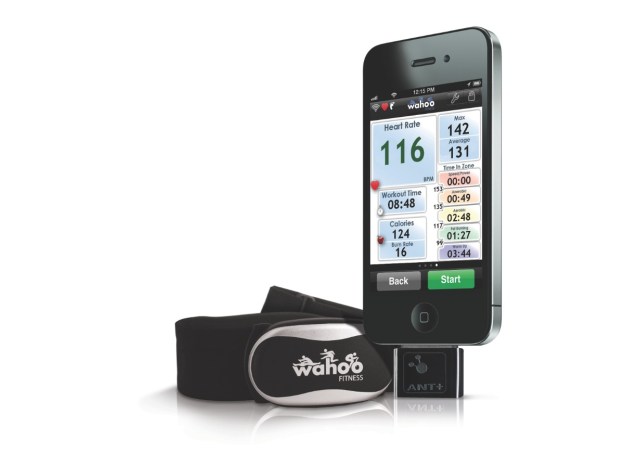 One of the many benefits of having a smartphone that is thin enough and light enough to carry anywhere in the palm of your hand, is being able to use it to help track and learn about your own fitness regimen, assuming that you have one. There are plenty of apps in the Apple App Store that let you track how far and how fast you run based on GPS, and there are also plenty of external devices (watches, monitors) that help track those same things, as well as vitals like your heart rate. The Wahoo Fitness Pack ($120) combines the best of both worlds and let’s your iPhone do the work — no need for a fitness-centric watch or tracker.
One of the many benefits of having a smartphone that is thin enough and light enough to carry anywhere in the palm of your hand, is being able to use it to help track and learn about your own fitness regimen, assuming that you have one. There are plenty of apps in the Apple App Store that let you track how far and how fast you run based on GPS, and there are also plenty of external devices (watches, monitors) that help track those same things, as well as vitals like your heart rate. The Wahoo Fitness Pack ($120) combines the best of both worlds and let’s your iPhone do the work — no need for a fitness-centric watch or tracker.
The “pack,” which can be used for running or other means of exercise (the gym, per se), includes a tiny dongle that plugs into your iPhone’s 30-pin dock connector, and a helpful heart-rate belt to monitor just how hard your insides are working. All of this works in conjunction with Wahoo’s very own free fitness app, but if you’re loyal to a different fitness app, the industry-standard ANT+ integration means that the dongle and heart-rate belt will work just as well with a non-Wahoo-branded app.
The most unique aspect of this kit is the ability to accurately monitor your heart rate and the amount of calories you’ve burned while you exercise. If you’re an outdoor runner, you likely have no idea how many calories you burn in a single session. If you are partial to the treadmill, you think you know how many calories you’re burning, but that number is probably wrong. With time, distance, and heart-rate statistics, the Wahoo pack can determine a much more accurate number, giving you a better handle on your fitness goals. The Wahoo Fitness Pack is available at Best Buy, both in stores and online.
Editors' Recommendations
- Best refurbished iPhone deals: Get an iPhone 14 for $513
- Best iPhone deals: Save on iPhone 15, iPhone 15 Pro Max and more
- How to find your lost phone (tips for iPhone and Android)
- Why you should buy the iPhone 15 Pro instead of the iPhone 15 Pro Max
- iPhone SE 4: news, rumored price, release date, and more


